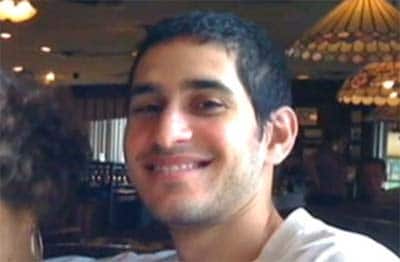3 stories that demonstrate why “Trial by Social Media” is dangerous
We explain why trial by social media – the term we use to describe instances when the Internet identifies, condemns and judges a “guilty” party instead of the courtroom – is so dangerous using 3 real life stories as examples.
Social media and the Internet allow us to communicate quicker, more efficiently and more effortlessly than ever before. Information travels at lightning speed across communities, even the globe, at a mere click of the mouse.
There is no medium that can rival social media in terms of speed, efficiency and accessibility. Nearly everyone you know probably has either a Facebook or Twitter account, and the quantity of information we digest through these social media platforms is unparalleled in history.
As such, social media as a great deal of power and influence. And while this power and influence is often used for good, it can be misused in equal measure. One of these misuses is the increasingly popular phenomenon of trial by social media.
In the real world courtroom, a trial will use a variety of tools and procedures to ensure a fair hearing; tools and procedures that are the result of centuries of evolution and trial and error. One of those tools is the assumption of innocence until proven otherwise.
The problem with trial by social media, on the other hand, is that it skips such formalities, and belongs to a digital world where misinformation often travels further and faster than facts. Most people are not in possession of all the facts, or possess incorrect facts. That, coupled with our unwavering human urge to assign blame and seek justice without delay, means trial by social media is both an inevitable and yet extremely dangerous occurrence.
We outline 3 real stories where trial by social media became very dangerous indeed.
The Bulger Killers
In 1993, the UK witnessed one of its most high profile and horrific killings when two-year old James Bulger was abducted and later tortured and murdered in Merseyside. More horrific still was the revelation that his killers were only children themselves, 10 year olds Jon Venables and Robert Thompson.
Venables and Thompson were released from prison many years later and given new identities. On social media, there was a frenzy of speculation concerning who they were and where they were now living.
Dozens of photos spread in Facebook groups set up specifically to identify the Bulger killers now, all purporting to show the Bulger killers, now in their 30s. Many photos coming attached to names, addresses and places of work. In true social media style, “evidence” was often satisfied by a passing and vague resemblance when compared to the iconic photos of the killers when they were only ten years old.
One such man, David Calvert, was unfortunate enough to have his photo disseminated across such groups, leading to an extensive online and text hate campaign full of threats of violence and death.
“I live in constant fear that someone will kill me and my family” Calvert told media in 2010.
“I tried to tell people I had nothing to do with it but people would not listen and we were forced to flee for our lives.”
“I’m not Jon Venables and have no links to him whatsoever. This is destroying our lives. I’ve had to take my kids out of school.”
Police have previously confirmed that Calvert was not either of the Bulger killers.
Sponsored Content. Continued below...
The Boston Bombings
April 2013, at the finishing line of the Boston Marathon two explosives detonated, killing 3 and injuring hundreds more.
And that started the largest online witch hunt the Internet has ever seen, involving hundreds of thousands of amateur sleuths pouring over thousands of videos and photos taken during the marathon hunting for clues as to the identities of the bombers.
It wasn’t long before amateur detectives – operating largely from Reddit – pointed the finger at a recently missing student called Sunil Tripathi. Sunil’s family had set up a Facebook page aimed at locating the missing student, and that Facebook page soon became overwhelmed with hateful comments from Internet users working under the incorrect assumption that Sunil was one of the Boston bombings.
Most of the hate was directed at the family of Sunil as thousands of angry people tried to contact them through phone calls on ABC news or leaving messages on the Find Sunil Facebook page. After many high profile journalists linked to reports that Sunil was indeed a prime suspect (reports that existed purely because of erroneous sleuthing on Reddit) Sunil was now the prime suspect on social media.
Sunil Tripathi had nothing to do with the bombings. He had killed himself some weeks prior to the bombings, and his body was discovered days after the real bombers were identified. Of course the devastation for Sunil’s family must have been unimaginable during this time.
We discuss the Boston Bombings witch hunt in more detail in our blog post here.
Sponsored Content. Continued below...
The Kensington Strangler
The neighbourhood of Kensington in Philadelphia was on high alert in 2010 after three women turned up dead and police realised they had a serial killer on their hands. Residents soon turned to social media to spread information pertaining to the case, and a 8000-strong Facebook group soon became the central go-to place for concerned residents.
However, when pictures of a man named Triz Jeffries along with his home address began appearing on the group, things began to spiral downwards. Rumours that 24 year old Philadelphia resident Jeffries was the killer spread virally, across text messages, social media and even flyers.
To this day it is unclear how the rumours started. But what is clear is that regardless of the veracity of the rumours, social media users were willing to share them. This led to Jeffries having to flee his house after people began to congregate outside his house. Police had to release a statement asserting Jeffries was not a suspect.
Soon after, the real killer was arrested and convicted.
~
These stories highlight the very real dangers of trial by social media, and are only a handful of many similar stories where people’s lives have been uprooted due to the effects of sharing information that wrongly condemns others.
Continued below...
Thanks for reading, we hope this article helped, but before you leave us for greener pastures, please help us out.
We're hoping to be totally ad-free by 2025 - after all, no one likes online adverts, and all they do is get in the way and slow everything down. But of course we still have fees and costs to pay, so please, please consider becoming a Facebook supporter! It costs only 0.99p (~$1.30) a month (you can stop at any time) and ensures we can still keep posting Cybersecurity themed content to help keep our communities safe and scam-free. You can subscribe here
Remember, we're active on social media - so follow us on Facebook, Bluesky, Instagram and X



